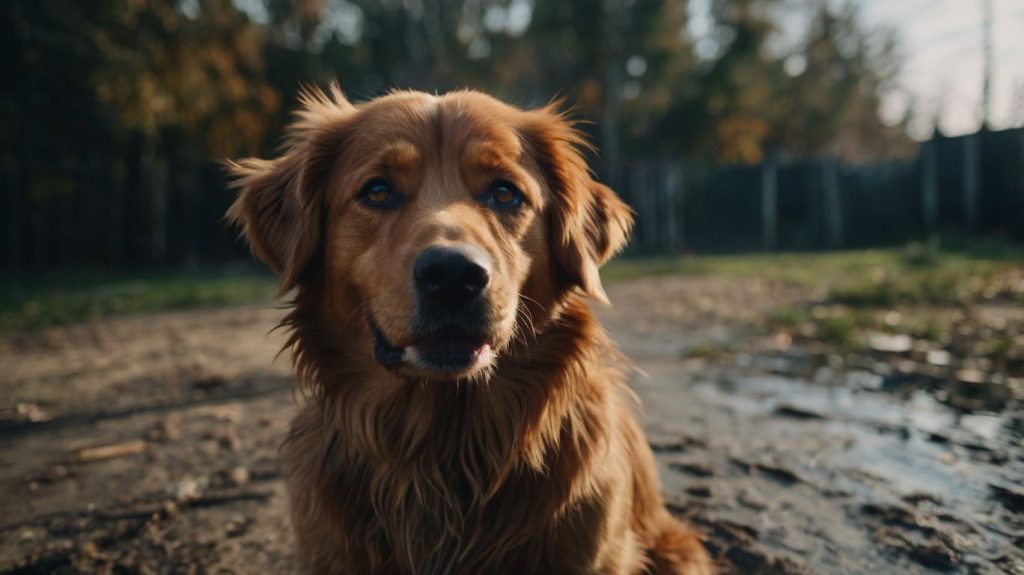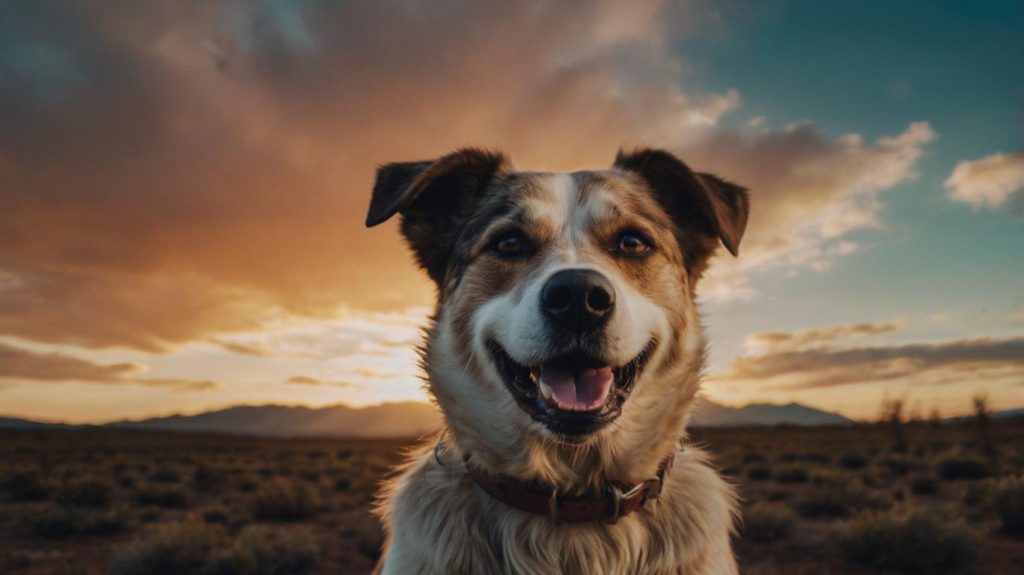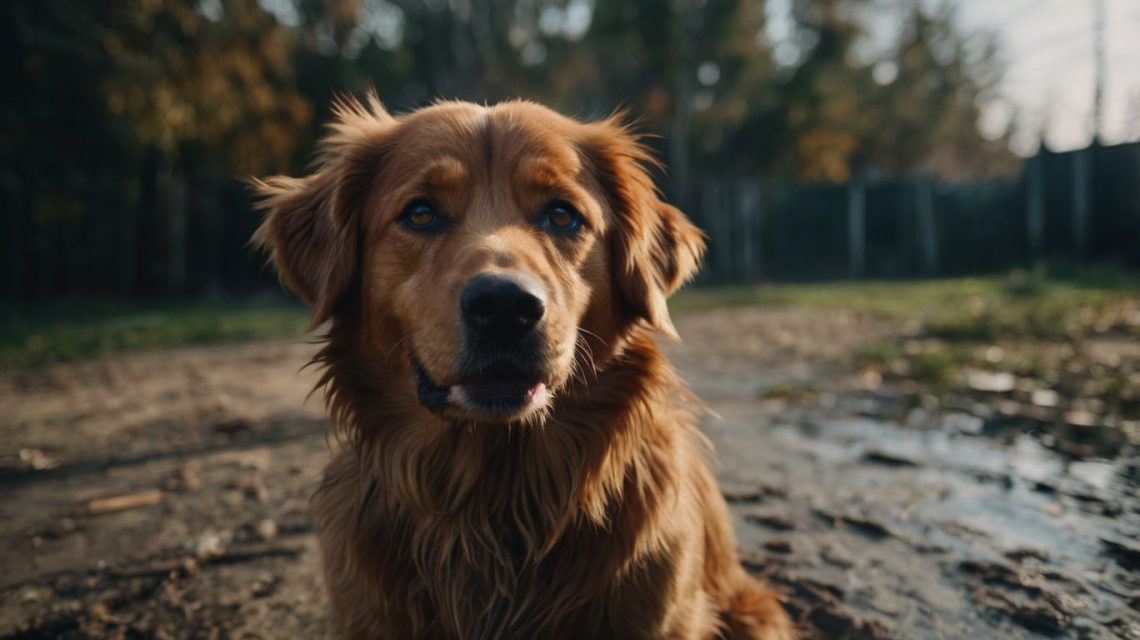Your dog starts panting—hard. But it’s not hot, they haven’t exercised, and there’s no clear cause. Instead, they pace, avoid eye contact, and seem nervous. This isn’t just odd—it’s a red flag. These are classic signs of anxiety panting in dogs, a condition many pet owners witness but don’t always understand.
While panting is a normal cooling mechanism, when it’s tied to stress or fear, it signals emotional distress. Let’s begin by exploring a heartfelt story that shows how awareness can turn worry into wellness.
Story: How Rocky’s Panting Revealed a Bigger Problem
Rocky, a 5-year-old Border Collie, was full of energy and loyalty. However, whenever his owner started packing a suitcase, Rocky began panting uncontrollably, pacing the house and drooling. His family assumed it was excitement—until the symptoms became more frequent and happened without any packing in sight.
Concerned, they visited their vet, who confirmed these were clear signs of anxiety panting in dogs. They implemented routine desensitization, environmental changes, and calming supplements. Over time, Rocky’s symptoms faded, and peace returned to their home.
This real-world case proves that dog anxiety doesn’t always look dramatic—but subtle signs like panting can speak volumes.

Why Understanding Anxiety Panting in Dogs Is Important
Dogs use body language to communicate emotions. When they feel stress, fear, or panic, panting becomes more than just a response to heat—it’s a warning. The sooner you address it, the better your dog’s mental and physical health will be.
Risks of Ignoring Anxiety Panting in Dogs
- Escalation into chronic anxiety
- Aggression due to prolonged stress
- Digestive issues linked to cortisol spikes
- Heart strain and fatigue
- Damage to the human-animal bond
Ignoring the signs not only impacts your dog’s well-being but also complicates future training and behavior correction.
What Causes Anxiety Panting in Dogs?
Panting is a natural canine behavior, but context matters. When there’s no physical trigger like heat or activity, emotional stress is the likely culprit.
Environmental Changes or Unfamiliar Settings
Moving homes, introducing a new pet, or even furniture rearrangement can spike stress and trigger anxiety panting in dogs.
Tip:
Use gradual exposure and positive reinforcement to ease your dog into new spaces.
Loud Noises and Storms
Fireworks, thunderstorms, and vacuum cleaners are frequent anxiety triggers. Many dogs begin panting even before the storm hits due to barometric changes.
Tip:
Create a storm-safe space with calming tools like white noise and comfort blankets.
Separation From Owners
Separation anxiety often shows through panting, pacing, and vocalization. Dogs left alone may pant excessively due to emotional distress.
Tip:
Try crate training, leaving comfort items, or using desensitization routines to reduce panic.
Car Rides and Travel Stress
Motion sickness aside, many dogs associate cars with fear or past trauma—leading to heavy panting.
Tip:
Start with short trips to positive destinations. Use calming chews or a covered crate for safety and comfort.
Vet Visits or Grooming Appointments
Clinical environments can cause immediate anxiety panting in dogs, especially when past visits involved discomfort or pain.
Tip:
Do “happy visits” to the vet just for treats and cuddles. Normalize the environment over time.
How to Recognize Anxiety Panting in Dogs
Knowing when panting signals anxiety instead of physical exertion is vital. Look for clusters of symptoms and contextual clues.
Key Signs That Panting Is Anxiety-Driven
- Panting without heat or exercise
- Accompanied by drooling, pacing, or whining
- Happens in specific triggers (e.g., storms, car rides)
- Tail tucked, ears back, or dilated pupils
- Refusal to eat or drink
Documenting when and where panting occurs will help confirm the anxiety link.
How to Calm Anxiety Panting in Dogs Naturally
Fortunately, there are many ways to treat anxiety panting in dogs—most of which are simple, accessible, and compassionate.
Create a Calm Environment
- Use soft lighting and low-volume background music
- Provide a familiar bed or crate
- Avoid sudden movements or loud speech
A consistent environment builds predictability, which reduces fear.
Use Calming Tools and Products
- Adaptil diffusers: Mimic natural dog-appeasing pheromones
- Thundershirts: Apply gentle pressure to promote calm
- CBD oil or calming chews: Natural supplements to ease anxiety
Always consult your vet before introducing new supplements.
Train With Desensitization and Counterconditioning
This method involves slowly exposing your dog to triggers while rewarding calm behavior.
- Start at a low-intensity version of the trigger (e.g., soft thunder sounds)
- Pair with high-value treats and calm praise
- Gradually increase exposure over weeks
Consistency is key. Never rush progress.

When to See a Vet for Anxiety Panting in Dogs
If your dog’s panting persists despite home strategies—or worsens—you should consult a professional.
Signs That Require Veterinary Support
- Panting lasts over 30 minutes without heat/exertion
- Includes vomiting, shaking, or aggression
- Happens frequently or randomly
- Interferes with sleep or daily life
Your vet can rule out medical causes and offer behavior plans or medication options.
Real Case Study: Nala’s Path from Panic to Peace
Nala, a 6-year-old Labrador mix, began panting heavily every time guests arrived. Over time, this escalated to barking and hiding under furniture. Her family logged her behavior and realized these were rooted in social anxiety.
They introduced calming chews, pre-visit desensitization, and taught Nala a “go to place” command. Within a month, Nala was no longer panting when the doorbell rang—and she even greeted friends with cautious curiosity.
Their story illustrates that with awareness and action, dogs can recover from emotional triggers.
FAQs About Anxiety Panting in Dogs
Is panting always a sign of anxiety?
No. Dogs pant to regulate body temperature. But if there’s no clear physical cause, it may signal emotional distress.
Can I comfort my dog when they’re panting from anxiety?
Yes, but do so calmly. Avoid reinforcing fear—praise and treat only when they display relaxed behavior.
Do all dogs pant from anxiety the same way?
No. Some dogs pant silently while others add pacing, whining, or restlessness. Each dog’s reaction is unique.
Are certain breeds more prone to anxiety panting?
Breeds like Border Collies, German Shepherds, and Cocker Spaniels are more sensitive, but anxiety can affect any breed.
Is medication necessary?
Not always. Many dogs improve with behavioral strategies, but some may benefit from short- or long-term medication.
Conclusion: Don’t Ignore Anxiety Panting in Dogs
Panting isn’t always about the heat. When your dog shows anxiety panting symptoms, it’s a cry for help—and an opportunity for you to step in with love, understanding, and support.
By paying close attention, creating a calm environment, and using evidence-based techniques, you can ease your dog’s mind and help them live with less fear and more joy.


